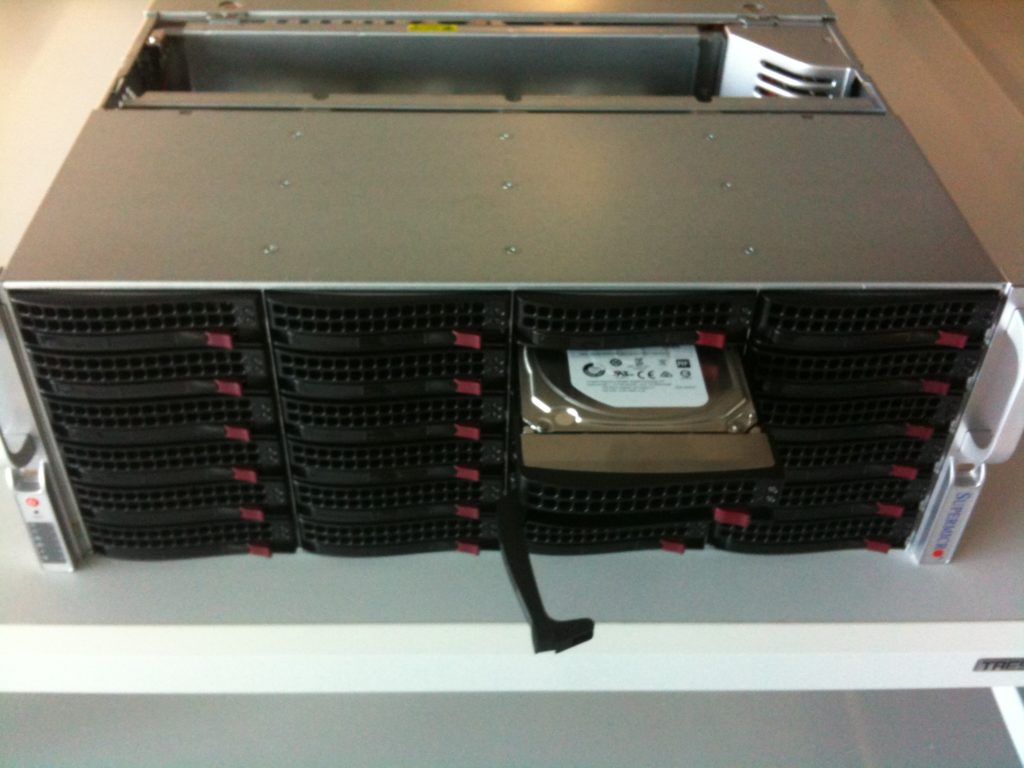
Today we received the 24 hard drives and the housing for our π-storage. We decided to use Enterprise NAS HDDs from Seagate with a capacity of 6 TB, because they offer a good balance between capacity, bandwidth, reliability and price. The discs are mounted in a 24-bay housing from SuperMicro shown on the right, which provides power and cooling.
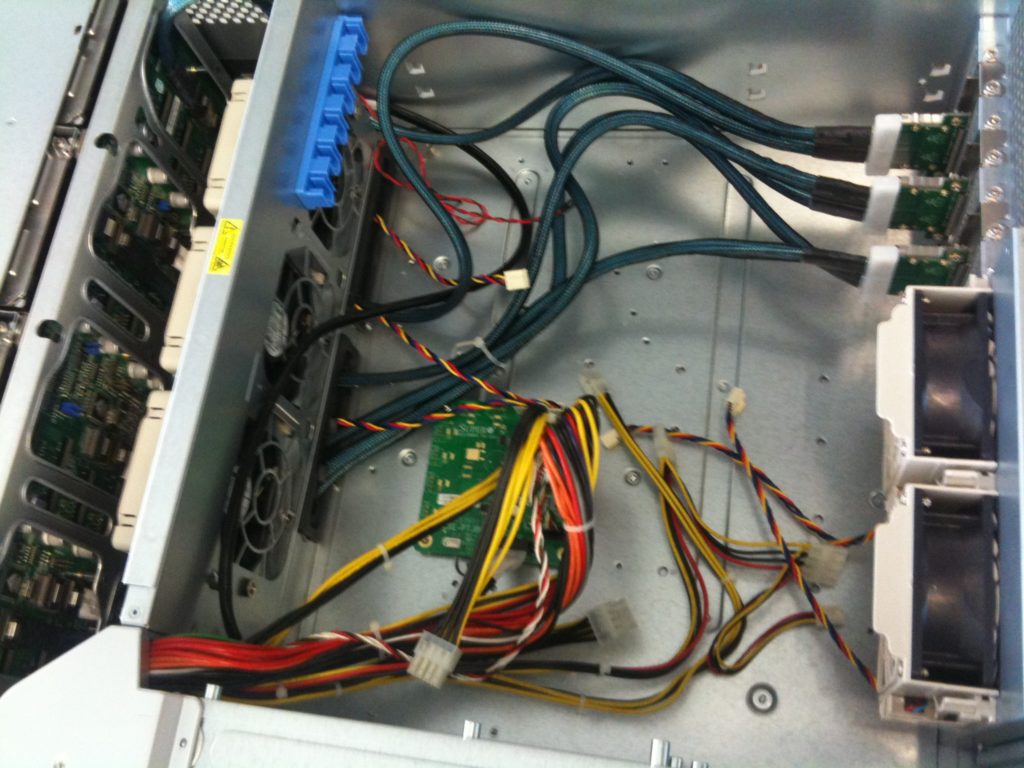
The interior of the storage, already cabled by my colleague, is shown in the picture on the left. The discs together with some fans are mounted on the left hand side. On the right hand side there is the back of the storage with the SATA plugs to connect the storage to the server. In the center there is a small green power board, which supplies the discs and the fans with electricity. Before starting the computation of π, my colleague will first use the storage to evaluate an object store and file system for a future high performance data processing solution for the customers of our X-ray detectors.
July 19th: Today I can use the storage to test its performance in the configuration we’re going to use for the computation of π. All 24 discs are individually mounted as single devices without using any RAID layer. This configuration is sometimes called JBOD (“Just a Bunch of Discs”). The discs run at a spindle speed of 7200 rpm and have a specified sustained transfer rate of 216 MB/s. I’m curious, whether y-cruncher is able to make use of this bandwidth. To find out, I run a computation of 100 billion digits of π and monitor the activity the Linux tool iostat. The results are listed in the two screenshots below. One was taken, while y-cruncher is reading from the discs, one while it was writing to the discs. As you can see, the measured throughput is very close to the specified bandwidth.
Writing seems to be somewhat faster than reading, but this is probably due to the fact, that I simply took random snapshots during the read and write phases of y-cruncher, which lasted only a few seconds. Nonetheless the measurement is accurate enough to conclude, that the performance of the storage is very close to its theoretical maximum. For the computation of π I plan to use about 20 discs, so we’ll have a total transfer rate of about 4GB/s.
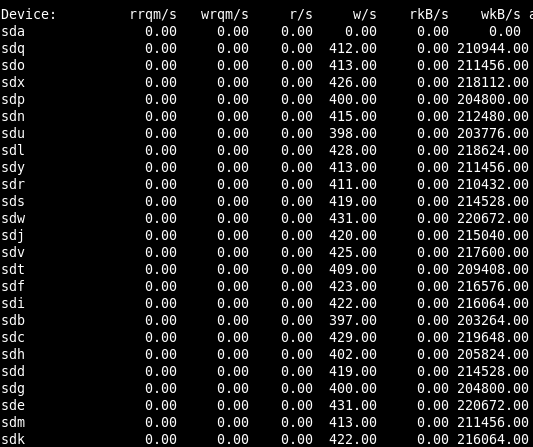
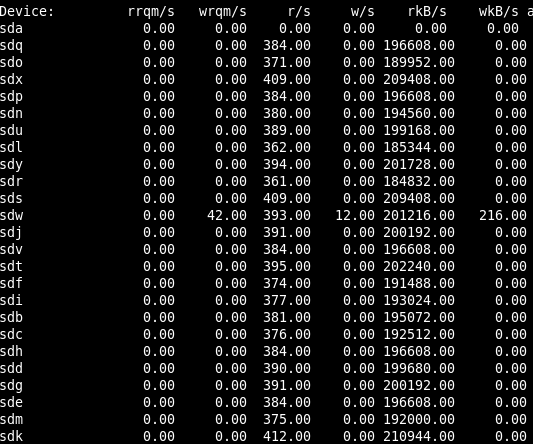
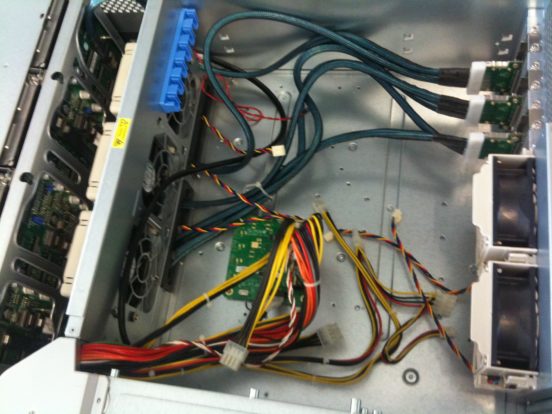





Comments by Pipi